一模一样 (yi1 Mo2 Yi1 Yang4, Sometimes Yi1 Mu2 Yi1 Yang4) - Exactly The Same

一模一样 (yi1 mo2 yi1 yang4, sometimes yi1 mu2 yi1 yang4) - exactly the same
lit. one mold one shape
Ex. Our cars look 一模一样。
More Posts from Logophile101 and Others

我一个人时很少觉得孤独;却经常在人群和团体中感到孤独。
I’m rarely bored alone; I am often bored in groups and crowds.
The Really Big Studying Masterpost
I couldn’t get it together enough to do a graphic or anything, so here goes. Sorry this is massively long but hopefully it will be helpful!
Studying
Review season printables
The lazy kid’s guide to study guides
Studying tips for university
Non-cutesy study tips
How I make my study guides
My study process
Effective study routine for intense classes
How to “study”
50 things to do between your study sessions
Studying: how tos, advice, & tips
Learning styles and study tips
Motivation + tests/studying
My study tips tag
This has some stuff on exams
My exam tag
The pomodoro method
“How can I focus/study effectively?”
Get started studying
General exam/studying tips
Learning styles and study tips
Memorization
Using a mind palace
Memorization
Improving memory
Studying with a terrible memory
Memory tips
Last minute studying
Emergency study plan
More on late studying JIC
3 day study plan
Finals / exams
Oh-crap-finals-are-so-close masterpost
Last minute tips for finals
Ways to reset your mind
Examinations: reminders
The ultimate guide to final exams
Tips to focus on studying (finals)
Exam prep tips
I ran out of time (on a test)
How to remember everything for a test
Exams masterpost
What to do the night before an exam
What to do the night before an exam (2)
Standardized testing
Standardized testing
The imperfect guide on AP classes
Free SAT & AP prep
AP review set printables
Free standardized test prep
AP study resources
AP testing tips and tricks
AP cram packets
#1 tip for AP classes
SAT masterpost
The new SAT
Focus and productivity
Distraction-free studying
Do’s and don’ts of a good study environment
15 things productive people do differently
Concentration masterpost
How to concentrate
Studying 101: how to stay focused, motivated, and on track
How to stay focused
How to deal with being lazy in school
Study tips for the lazy student (1)
Study tips for the lazy student (2)
Being sick, focusing and studying effectively, & maintaining physical and mental health
A day of studying: tips
Productivity with a planner
Summer productivity
Waking up early and refreshed
Holiday productivity
Summer studying
My productivity tag
Burnout / motivation / procrastination
Doing homework when you’re sick
Studying with a lack of motivation
Burnout 101
How to start working when you really don’t feel like it
Got motivation?
General motivation
How to study when you don’t want to
Procrastination
Procrastination advice
Motivation
Motivation advice
Resource for procrastination
A very long list to help you survive school
How to stop procrastinating
24 tips to overcome procrastination
motivation.mp3
Ways to avoid burnout
Motivation (2)
How to self-motivate
My motivation tag
Mental health
Stress relief
Don’t let it ruin your education
Studying with depression
How to find peace as a student
Living and studying with anxiety
How to study with a mental illness
Depression/mental health resources
Managing stress for the overtaxed student
How to be less prickly when stressed
What to do when you don’t get the grades you want
What to do on a bad day
Why it’s okay to fail & how to deal with failure
Dealing with failure
I got a bad grade, now what?
What to do when you get a bad grade
Feel better
How to find peace as a student
How to love yourself
Calming and fun websites
Anxiety and negativity
A beginner’s guide to meditation
Taking finals with mental illness
My mental health tag
Self care
How to take care of yourself when you’re sick
How to stay healthy in inhospitable weather
Healthy studying
For people who struggle with self care, etc.
Self care cheat sheet
Finals self care (1)
All the self care
Small ways to improve your life
A self care masterpost to help you get through school
Finals self care (2)
Balancing a healthy lifestyle with studying
Hotlines/self care refs
101 self care ideas
My self care tag
+ self promotion (bc everyone seems to be doing this)
A masterpost of masterposts
College masterpost
Note taking masterpost
How to be the best student you can be
My study process
Lecture tips
Coping with obsession
Confidence
Money masterpost
My YouTube (not a studytube)
My Instagram (not a studygram)


我会在伤痛中找到力量并改变我的方法。
I’ll find strength in pain and I will change my ways.
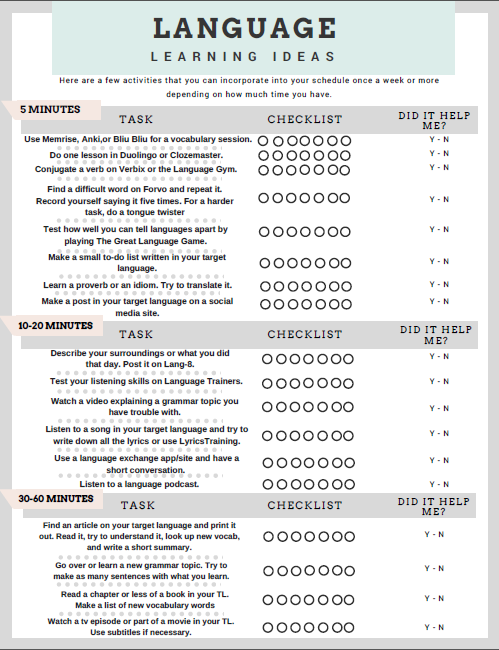
Language Learning Ideas Printable
Here is a printable I made that I hope can help you out on your language learning journey. It has different activities based on how much time you have, as well as a checklist for frequent activities. By using it, you can see what works for you and what doesn’t.
I tried to include as many things that many people can use, but some activities can’t be used by all language learners, unfortunately. The links to the website are clickable in the PDF file. I tested this myself and have even included a blank version if you prefer to write your own activities. Again, these are just some ideas for you to incorporate and I hope that they are useful.
Download Links: Dropbox
Full Activities
Blank Version

如果我们不做,谁做?如果不是现在,更待何时? If not us, who? If not now, when?
Today I’d like to talk about something that I was taught as a student of music that I think could be relevant for language learners. It’s something a teacher told one of my teacher’s who in turn, passed the knowledge down to me.
It’s all about raising the ceiling and raising the floor.
So what do I mean by this?
Let’s imagine, for a moment, that your language ability is a room. The ceiling is the highest potential you’re capable of when the situation happens to be just right and everything is fresh in your mind. The floor, on the other hand, is the worst you may do if things don’t turn out the way you planned, let’s say, for example, the person you are speaking with has an accent you don’t understand or they don’t reply in the way you might have expected, or the environment you’re in is noisy and you have trouble hearing the other person clearly, leaving you at a loss.
When it comes to deciding just what you’ll study, you have two options. You can raise the ceiling or you can raise the floor.
Defining the Ceiling and the Floor in Language Learning
When you look at your language ability as having a ceiling and a floor, the ceiling height is determined by how well you can access the material you already know in a language (your active knowledge in the language) and the floor is determined by your total knowledge in a language (this includes things you know both actively and passively).
Active knowledge in a language is that which you are able to use when speaking or writing without any reference. It includes the words and grammar rules that you can actively recall. Your passive knowledge in a language, however, are the words and grammar rules that you’ll recognize upon hearing or seeing, but may not have come up with on your own when speaking or writing. If you’ve ever had an experience where you found yourself saying “oh yeah, that’s what that word is” or “that’s right, I forgot that’s how to conjugate that verb in that tense”, that’s your passive knowledge at work.
How to Raise the Ceiling
The ceiling, or your active knowledge in a language, is raised by reviewing and further instilling the material you’ve already learnt in your target language. I wrote a post last month covering how to work on the things you already know in a language, but I’d like to touch on it a bit more today. So how do you raise the ceiling?
Give the Material You’ve Learnt a New Context // If you’ve primarily worked with one or two sources to learn your target language, throw a completely different method into the mix. So let’s say, for example, that you’re learning Korean and that your focus has been on working through vocabulary on Anki, studying with Flashcards, and listening to audio lessons on KoreanClass101. For a quick change, try watching a free television show on Hulu or Drama Fever with the subtitles while taking notes on phrases you think will be useful or by jumping onto HelloTalk to chat with fellow Korean speakers. The more places you see vocabulary or grammar patterns pop up, the more likely you are to remember them. Giving your target language a new context can do a lot to help you retain some of what you’ve learnt elsewhere.
Speak Your Target Language // One of the best ways to maintain your knowledge of a language active is to speak it. The improvisation required as part of a conversation will not only help you keep your vocabulary active, but it might also do the double duty of raising both the ceiling and the floor (if the person you’re speaking with helps you out with any corrections). Don’t play your conversations safe, though! To really maximize this language learning tool, make a point of using new words or phrases appropriate to the conversation. It will help them transition over from your passive knowledge into your active knowledge.
Start Reading in Your Target Language // Another way to keep your target language fresh is by reading material in the language. There is a lot to choose from here – you can check out graded readers, translations into your target language, kids books, comics, articles, short stories and even books originally written in your target language. An important thing to keep in mind, especially if you’re not a huge fan of reading, is not to force yourself to read something you wouldn’t read in your native language. If you have no interest in biographies or the news, but you enjoy gossip columns and comics, steer clear of the former and indulge in the reading material you enjoy in your target language. The Language Reading Challenge I’m currently hosting is a great way to get started with this method!
Turn the Subtitles Off When Watching Film or TV // Even if you don’t understand everything that goes on in the film, you’ll find you pick up quite a bit more watching film and tv without subtitles. When we watch tv with the subtitles on, we tend to focus on what’s written and block out part of what we’re hearing.
Start Free-Writing in Your Target Language // One way you can help keep your vocabulary active is by free-writing in your target language. This can take the form of journaling, letters, short stories, poems, etc. It doesn’t really matter and no one else has to see what you write (unless you want them to, of course). Free-writing is a nicely balanced challenge – you have a bit more time to think about the words that you want to use than in a conversation, but you also don’t want to spend too much time thinking about which words you want to use because you’ll lose the flow of writing (and maybe even your train of thought).
Translation // This is another tool that you can use to raise both the ceiling and the floor because even if you can freely translate a good portion of the text, there’s a really significant chance that you’ll need to look a couple things up.
Listen to the Radio, Podcasts, or Songs in Your Target Language // If you need to reference a transcription or a translation of the audio, try listening to it alone at least once, first. After you take a look at the transcription or translation, listen to it again without reading along to see just how much your comprehension has increased. Finally, if you have the time and energy to do it a third time, you can listen while reading along.
How to Raise the Floor
Pickup a Coursebook in Your Target Language // But first, make sure it contains material that is above your level. There are a ton of fantastic coursebooks available in most languages and they often cover a wide range of vocabulary and grammar. The coursebook that I personally enjoy is Assimil.
Use Dual Language Readers // When you’re not quite ready to dive into reading material entirely in your target language, dual language readers can be a really great asset. I personally prefer side-by-side dual language readers because I cannot see the translation just below what I’m reading and I therefore try a little harder to figure it out on my own before jumping over to the next page for the translation, but you can use whatever you’re comfortable with.
Watch TV Shows or Movies in Your Target Language with Subtitles // I have picked up quite a few useful expressions watching film and tv in my target language, but I wouldn’t have been able to do it if I hadn’t been watching with the subtitles on. When I watch foreign films without subtitles, I’m so concentrated on catching the things I do understand that I often totally miss new material. Subtitles, however, give me that extra little bit of help that increases the odds I’ll pick up a few new things.
Take Notes // Whenever you’re working with a resource, whether it is a textbook, a course, a teacher, or a podcast, take notes. There are studies that have shown we retain information better when we write it out by hand, and I’ve found it to be true in my own experience.
Learn the Words to Your Favorite Songs and Then Find Out What They Mean // It’s one thing to look up the lyrics to your favorite songs in your target language, but it’s another to spend the time translating them. In addition to being a fun way to learn your target language (and improve your accent), song lyrics often tend to include creative and more colloquial language than sources like textbooks, so listening to popular music can be a fun way to pick up new words.
Spend Some Time with Flashcards // Flashcards are a great way to study new vocabulary and my personal favorite. A few years back I wasn’t a huge fan, but now that I use Memrise and Anki, studying flashcards has become a much more efficient part of my learning routine.
Do you need to raise the floor or the ceiling?
If you find yourself constantly tripping over things that you “should” remember or that “you know you know”, then it’s likely time for you to raise the ceiling. On the other hand, if you find that you have a pretty good recollection of the material you’ve worked on and you’re feeling you’ve hit a bit of a plateau, you might need to raise the floor.
In a perfect world, the floor and ceiling would meet. In reality, we’ll never really be able to actively remember every bit of information we’ve learnt. And that’s totally okay. As long as you have clear goals in mind and you’re taking the steps you need to in order to keep moving in the right direction, that’s really all that matters.
There will be days where we’re frustrated with our progress, but there will also be days where things go smoothly and it makes everything worth whatever frustration we may have felt.
An important thing I’d like to point out before I close out this article is that self-evaluation is an important step to figuring out how you’re going to go about your studies. Having the ability to look at what your doing and take note of whether it’s working for you or not is critical to your progress. If you find a certain study technique isn’t working for you, stop spending time on it and look for a way that works better for you. If you find other techniques are helping you make huge strides in your learning, see if there’s a way you can spend more time on them!
There are, of course, plenty more ways to either raise the floor or ceiling (or to do a little of both at the same time), so I’d love to hear about the ways that you improve your active and passive knowledge in your target languages! Leave me a note in the comments below!
The post How to Become a Better Performer in Your Target Language appeared first on Eurolinguiste.
being a responsible adult (or even college student) in chinese
appliances:
洗衣机 xǐyījī washing machine
烘干机 hōnggānjī dryer
洗碗机 xǐwǎnjī dishwasher
吸尘器 xīchénqì vacuum cleaner
冰箱 bīngxiāng refrigerator/fridge
炉子 lúzi stove
烤箱 kǎoxiāng oven
热水器 rèshuǐqì hot water heater
微波炉 wēibōlú microwave
加湿器 jiāshīqì humidifier
热水壶 rèshuǐhú kettle
面包机 miànbāojī toaster
chores:
洗衣服 xǐ yīfu to wash clothes
烘衣服 hōng yīfu to dry clothes
叠衣服 dié yīfu to fold clothes
挂衣服 guà yīfu to hang clothes
打扫 dǎsǎo to sweep
收拾房间 shōushi fángjiān to tidy up a room
吸地 xīdì to vacuum the floor
擦地 cādì to mop the floor
铺床 pūchuáng to make the bed
摆桌子 bǎi zhuōzi to set the table
擦窗户 cā chuānghu to clean the windows
洗碗 xǐwǎn to wash the dishes
喂狗/猫 wèi gǒu/māo to feed the dog/cat
other stuff:
脏 zāng dirty
乱 luàn messy, sloppy, disorderly
干净 gānjìng clean
整齐 zhěngqí neat, tidy, in order
正式 zhèngshì formal, official
随便 suíbiàn casual, informal
简单 jiǎndān simple
不行 bùxíng won’t do, be out of the question, be no good
洗衣房 xǐyīfáng laundry room
用 yòng to use
铺 pū to spread, to extend
愿意 yuànyì to be willing to, want to



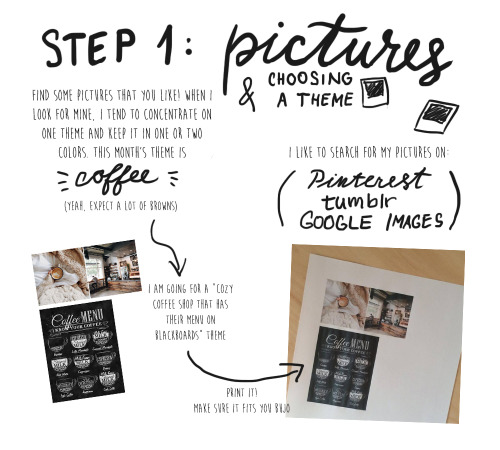



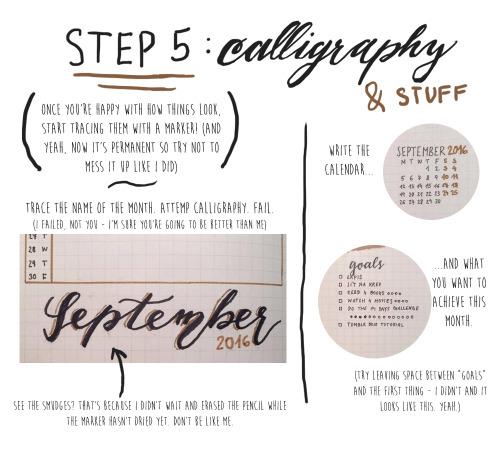

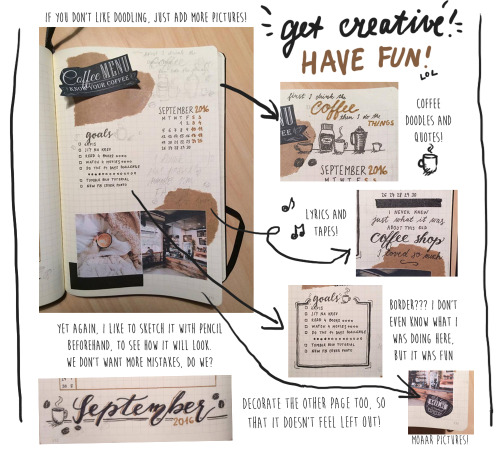
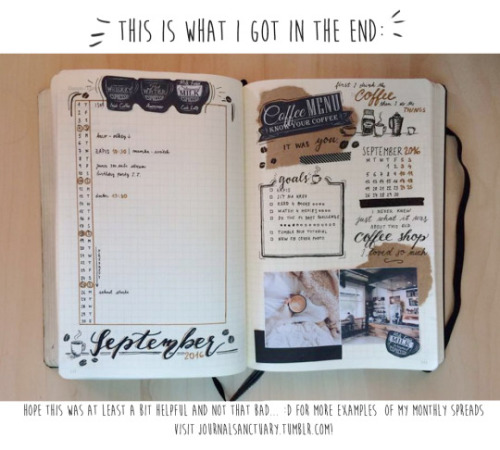
Hey! I am really late with this, but I though that some of you might like to see how I make my monthly spreads. I did this sort of “infographics” (??? am I even allowed to call this thing infographics??) and even though it looks like this, I had so much fun making it :D. I really don’t know whether this is helpful or not, I tried. In case you’d like to see more tutorials (and hopefully better ones) in the future, let me know please? And thanks if you read it till the end, it’s so long :D
(I totally ran out of space for pictures at the end lol)

-
 amelia-dynasty-blog liked this · 7 years ago
amelia-dynasty-blog liked this · 7 years ago -
 chinesestudycollection reblogged this · 7 years ago
chinesestudycollection reblogged this · 7 years ago -
 laerklem liked this · 7 years ago
laerklem liked this · 7 years ago -
 silkporcelain liked this · 7 years ago
silkporcelain liked this · 7 years ago -
 tengwarnation reblogged this · 7 years ago
tengwarnation reblogged this · 7 years ago -
 lizzchan liked this · 7 years ago
lizzchan liked this · 7 years ago -
 thekweenoftheeyesores liked this · 7 years ago
thekweenoftheeyesores liked this · 7 years ago -
 howdoyoulanguage reblogged this · 7 years ago
howdoyoulanguage reblogged this · 7 years ago -
 divinereign4ever liked this · 7 years ago
divinereign4ever liked this · 7 years ago -
 iloveforeignlanguages reblogged this · 7 years ago
iloveforeignlanguages reblogged this · 7 years ago -
 the-bluestreak-cat liked this · 7 years ago
the-bluestreak-cat liked this · 7 years ago -
 mega-aggron liked this · 7 years ago
mega-aggron liked this · 7 years ago -
 peanutscratch reblogged this · 7 years ago
peanutscratch reblogged this · 7 years ago -
 peanutscratch liked this · 7 years ago
peanutscratch liked this · 7 years ago -
 loledanri liked this · 7 years ago
loledanri liked this · 7 years ago -
 snakesensei liked this · 7 years ago
snakesensei liked this · 7 years ago -
 bingucrayon liked this · 7 years ago
bingucrayon liked this · 7 years ago -
 porivore liked this · 7 years ago
porivore liked this · 7 years ago -
 dujingxiu liked this · 7 years ago
dujingxiu liked this · 7 years ago -
 gloriafortismiles liked this · 7 years ago
gloriafortismiles liked this · 7 years ago -
 deiselmilk liked this · 7 years ago
deiselmilk liked this · 7 years ago -
 yetanotherlanguage reblogged this · 7 years ago
yetanotherlanguage reblogged this · 7 years ago -
 theperfectblackvelvet liked this · 7 years ago
theperfectblackvelvet liked this · 7 years ago -
 chinesebananana reblogged this · 7 years ago
chinesebananana reblogged this · 7 years ago -
 cityscapeskeletons liked this · 7 years ago
cityscapeskeletons liked this · 7 years ago -
 kiaracici liked this · 7 years ago
kiaracici liked this · 7 years ago -
 jjnoshame liked this · 7 years ago
jjnoshame liked this · 7 years ago -
 basedchedda liked this · 7 years ago
basedchedda liked this · 7 years ago -
 lucylovely69 liked this · 7 years ago
lucylovely69 liked this · 7 years ago -
 wuqinghua liked this · 7 years ago
wuqinghua liked this · 7 years ago -
 eviestudieschinese reblogged this · 7 years ago
eviestudieschinese reblogged this · 7 years ago -
 she-changestheweather liked this · 8 years ago
she-changestheweather liked this · 8 years ago -
 seh-mai liked this · 8 years ago
seh-mai liked this · 8 years ago -
 oshzt liked this · 8 years ago
oshzt liked this · 8 years ago -
 orventure liked this · 8 years ago
orventure liked this · 8 years ago